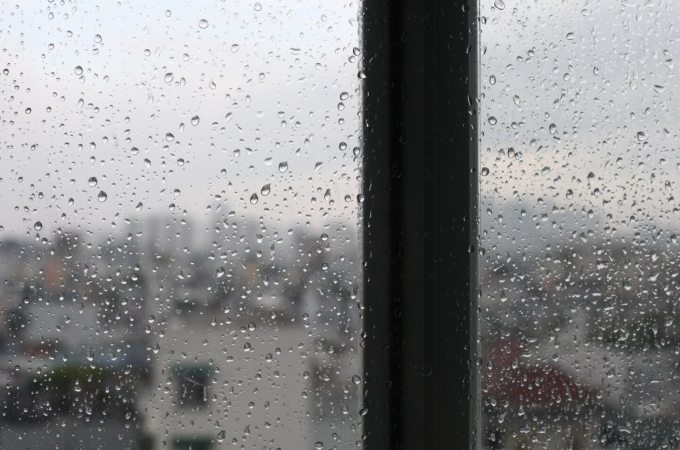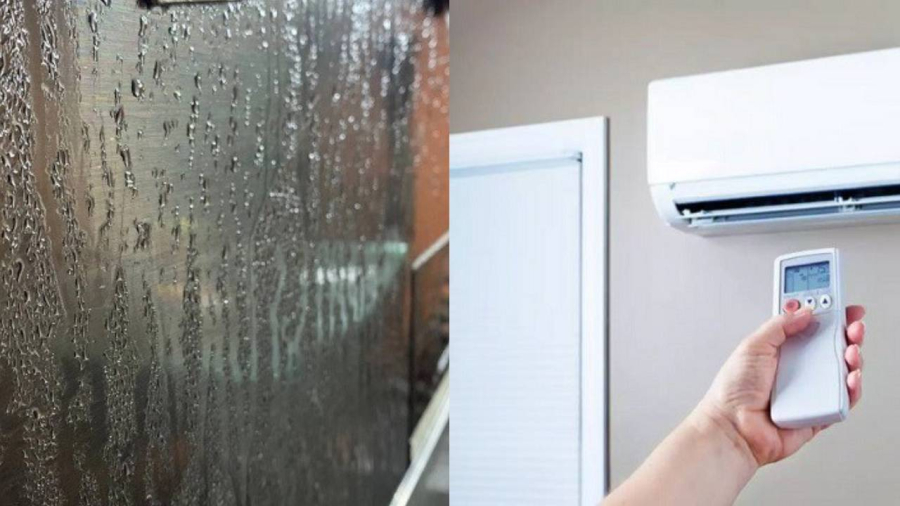Mistakes to avoid during humid days
Using a fan
You might think that using a fan will help keep your house ventilated, but it actually contributes to more humidity. The cold air from the fan causes more condensation and moisture, leading to increased mold growth. Using a fan to dry clothes indoors is also not recommended as it not only takes longer to dry, but also adds more humidity to the house.

Leaving doors wide open
With the current high outdoor humidity, leaving doors open allows more humid air to enter the house, resulting in a more sweaty and uncomfortable environment. The best approach is to keep all doors closed and use air conditioners or dehumidifiers.
This also applies to bathrooms. After use, it’s advisable to close the bathroom door to prevent humid air from escaping into adjacent rooms. Additionally, placing a few newspapers near the bathroom mat can help absorb moisture.
If you don’t have an air conditioner or dehumidifier, closing the doors alone won’t be effective. You can partially open the front and back doors to allow for some airflow and ventilation. However, it’s best to do this when the weather outside is cooler and sunny.
Cleaning the house
When experiencing high humidity, your house will constantly feel damp. Many households frequently wipe and fan-dry their homes, but this method only adds more moisture to an already humid environment.
The optimal approach is to use a dry cloth for cleaning. If your house doesn’t have an air conditioner, dehumidifier, or room heater, you can use a blow dryer on a hot setting to quickly dry the floor. This method is efficient in reducing humidity to some extent.
Additionally, you can try inexpensive methods to reduce humidity, such as using charcoal, lime, or old newspapers. Place them under the bed or in corners of the house.
What to do during humid weather?

Use the air conditioner in dry mode
An air conditioner with a dry mode can effectively reduce humidity in a room, making it an efficient way to combat humidity without much effort. Remember to adjust the air conditioner when there’s high humidity.
Seal gaps in the house
Sealing gaps in the house is an effective solution to prevent excessive humid air from entering your home, reducing the chances of mold growth.
Use moisture-absorbing materials
Using moisture-absorbing materials is another effective method when dealing with humid weather. You can invest in an air dehumidifier or use lime or charcoal to absorb moisture, which can be cost-effective and practical in reducing humidity.
Use newspaper to combat humidity
In areas prone to dampness, such as near the kitchen or bathroom sink, walls can become damp and moist. Use newspaper to stick on the damp walls to absorb the moisture. This method is relatively inexpensive and effective.
Prevent mold and moisture in the wardrobe
Closets made of wood or plywood are prone to mold and moisture. To avoid mold and musty odors on your clothes, use moisture-absorbing packets to limit these issues.






























